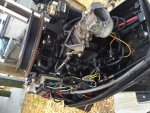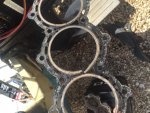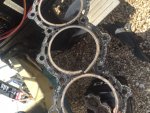It sounds like it is out of fuel. Ensure the air fuel mixture screw (brass screw with spring) is properly set. 1-1 1/4 tuns out from lightly seated. Check the carb bowl make sure it is at least half full after you prime it. I understand this is hard but not impossible by catching all the fuel dripping from the bowl when you unscrew the center screw. Remove the bowl, cover the hole with your finger and replace all the fuel you caught and it should at least cover half of the fuel bowl. This will tell you the inlet needle valve is not stuck shut.
After all of the above, install a clear fuel filter between the fuel pump and the carb inlet. A Fram G2 for less than $5 will do. This is more for troubleshooting than filtering. And it should be left in place even after all problems have been fixed (for future fuel relating troubleshooting it is indispensable). Next get small (pint or quart size) spray bottle and fill it halfway with fuel oil mixture.
Now try starting it again. If it still won't start with the clear fuel filter at least half full, spray fuel oil mix directly into the carb while another person is cranking it. Did it try to start? If it did, check the fuel enricher (choke system) to make sure it is working properly. Remember, to choke or activate the enricher you have to push in the ignition switch while starting.






















